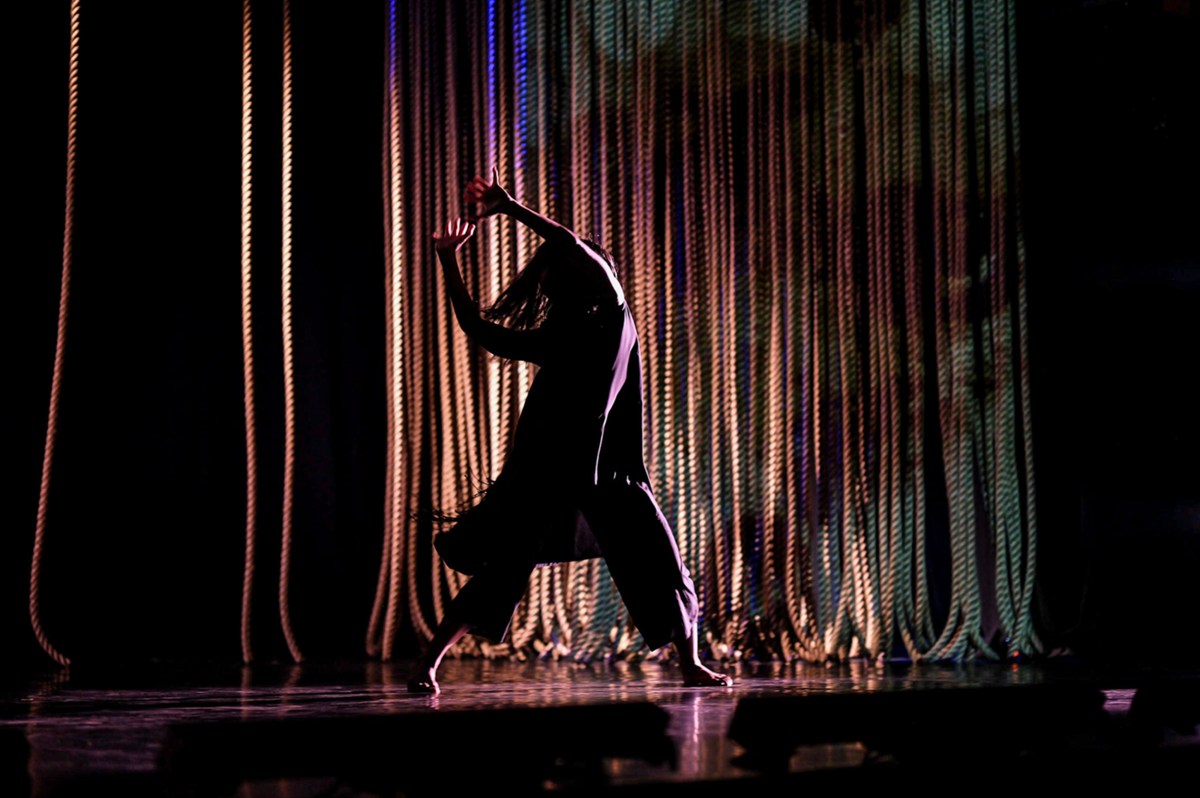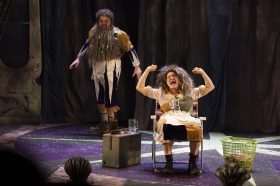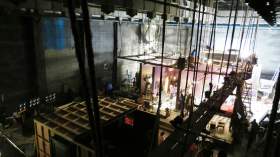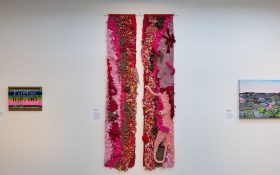Broome-based Indigenous intercultural dance theatre company Marrugeku’s Mutiara was more intimate and reflective than its previous production Jurrungu Ngan-ga (Straight Talk), which was an explosive large-scale work about the incarceration of Aboriginal people and asylum seekers. Nevertheless the two shared a common focus on racialised violence and oppression as defining mechanisms of White Australia since colonisation.
Mutiara (which means “pearl” in Malay) dealt with the history of pearling in Broome, from its Indigenous antecedents – when pearl shells were carved and worn or traded across the continent and the region – to its colonial expansion as a global industry in the 19th century, when pearls were primarily used for the manufacture of buttons in Europe. This expansion involved the enslavement, forced labour and exploitation of Aboriginal, Malay and Japanese divers, all of whom were overworked and many of whom died from decompression sickness.
The four performers were also co-choreographers: Dalisa Pigram (who is also Marrugeku’s co-Artistic Director alongside Rachael Swain, the show’s dramaturg), Soutari Amin Farid (who is also its cultural dramaturg), Zee Zunnur and Ahmat Bin Fadal (who is also an adviser on pearl diving history and Malay culture). Collectively they brought to the work a strong mix of choreographic traditions and practices, including Indigenous and contemporary dance, as well as the Malay martial art known as silat.
All four also have strong cultural and geographical connections to the work: Pigram was born and raised in Broome and has a mixed Yawuru/Bardi and Malay/Filipino heritage. Farid, Zunnur and Bin Fidal are Malay Singaporeans. The latter also has a more personal connection: now in his 80s, he emigrated to Broome in the 1960s and worked as a diver in Broome from the 1960s until he retired after a near-fatal accident while diving, and this experience was a central thread in the content of the work.
The form was episodic and thematic rather than narrative-based. Certain sequences stood out: Zunnur’s opening appearance as a quivering Bomoh (a Malay shaman figure who acts as a kind of portal to the spirit world) with her hair hung forward in a curtain over her face, Pigram and Farid joyfully and lovingly partner-dancing to the popular music of the 1950s in defiance of regulations against interracial fraternisation, Farid doing an elegant fan dance with two pearl shells, Bin Fidal performing an austere solo based on his silat martial arts training and, most memorably, Pigram doing a hauntingly expressive dance with spoken text invoking the fate of Aboriginal women who were kidnapped and enslaved (or “blackbirded”) in the 19th century and forced to dive, as well as being used as sex slaves (many of these women were pregnant because it was falsely believed that this gave them greater lung capacity for diving).
At other times the choreography was less specific and seemed to wander and lose focus, as if an over-reliance on task-based improvisation had led to simply maintaining and exploring various physical or emotional states. This impression was underscored by the overuse of dim, moody lighting and ambient or repetitive music tracks. The set design by visual artist was by Abdul-Rahman Abdullah – consisting of a downstage pile of pearl shells and an upstage curtain of ropes, which hung from the lighting grid and were reminiscent of the riggings of pearl luggers or the signal-ropes to which divers were tethered, as well as resembling fronds of sea grass. This design also induced a certain visual monotony, notwithstanding the fact that the ropes were also used as a projection surface for black-and-white archival footage of the pearling industry, as well as being variously manipulated by the performers.
A sense of being in an underwater world was effectively evoked, but we never emerged from a realm of memory and reverie, even when Bin Fidal moved around the space reading aloud in Arabic from invisible gravestones. Recorded voiceovers using stereotypical accents and featuring excerpts from archival texts of racialised pseudo-science or officialese added a further layer of horror, but felt clumsy in execution and (like the archival video projections) reinforced the effect of being continually pulled out of the present moment and back into the past.
Read: Theatre review: Candide, Palais Theatre
Mutiara covered important historical ground, included some deeply moving performances (especially from Pigram and Bin Fidal) and was grounded (like all of the company’s work) in the authenticity of the performers’ connection with the material. Nevertheless, in comparison with Jurrungu Ngan-ga, the work felt underdeveloped and lacking in direction. It was if the aura of nostalgic myth surrounding the pearling industry still hasn’t quite been dispelled, despite the history of violence lurking beneath its deceptively placid surface.
Mutiara
Concept: Soultari Amin Farid, Dalisa Pigram, Zee Zunnur and Rachael Swain
Co-Choreographers and Performers: Soultari Amin Farid, Dalisa Pigram and Zee Zunnur with Ahmat Bin Fadal
Cultural Dramaturg: Soultari Amin Farid
Dramaturg: Rachael Swain
Composer, Sound Designer and Performer: Safuan Bin Johari
Set Designer: Abdul-Rahman Abdullah
Costume Designer: Zoë Atkinson
Lighting Designer: Kelsey Lee
Pearl Diving History, Malay Cultural Adviser and Silat Training: Ahmat Bin Fadal
Mutiara was performed 9-12 February as part of Perth Festival.





